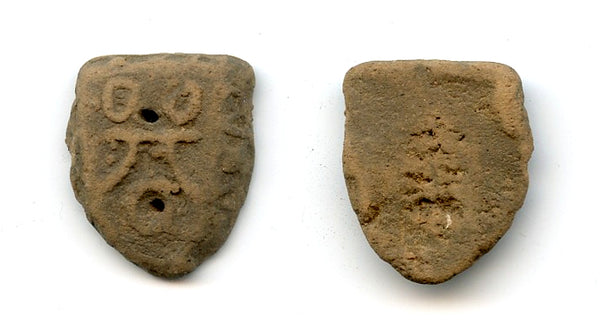
One uncertain Chinese character which has been read as "Jin" ("money") or "Bei" ("Shell", a possible reference to the cowrie shells) / Blank. 20mm long, 1.53 grams. Ca.400-220 BC. Gratzer/Fishman “The Early Round Coins of China” #7.14c (based on Hartill 1.4).
With original holes for stringing.
Ant-nose money in copper, lead and clay were used as ceremonial (funerary/mortuary) money. Their dating is difficult – some are probably contemporary with the official issues, but some are found on sited dated to much later periods. It seems they were popular as ceremonial coins for hundreds of years after they were no longer used as money, but defining this period is not possible at this time.
These coins are known as Bi Qian (Ant Nose Money) or Gui Lian Qian (Ghost Face Money) were definitely used as money. They have been found in hoards, strung up, like the later cash with holes, in the areas to the south of the Yellow River corresponding to the State of Chu in the Warring States period. Their weight is very variable, and their alloy often contains a high proportion of lead. The name Ant (and) Nose refers to the appearance of the inscriptions. It is likely that these coins were actually meant to imitate the cowrie shells which were used as money for centuries earlier.
This coin is unconditionally guaranteed to be authentic.
